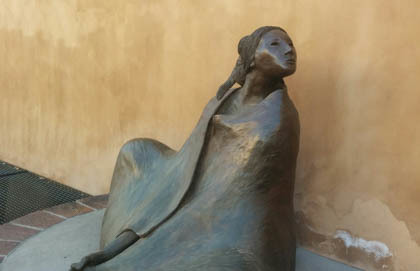You can download and read Milton Friesen's latest paper, Charity and Social Capacity, on the Cardus website.
Imagine that you are the crew of a ship sailing from Italy to Hamilton. You arrive in Canadian waters only to discover that complications related to the sale of your vessel means it is stuck in limbo in Hamilton harbour and you along with it. Who will look after you in this strange turn of events?
This happened to the crew of the 9,000 ton Italian freighter, Ardita, in April of 2016. The ship is still here. The owners and employers of the vessel naturally carry the primary responsibility for the crew who are free to come and go and are being paid. Beyond this primary care are all the other less tangible needs that remain. In this case, members of a charitable organization that is older than Canada, the Mission to Seafarers organized in 1856 in London, has stepped in to help out the crew of 14. At its founding, the organization recognized the many and varied needs of sailors, and sought to bring comfort, hope, and material support to that most intrepid of work forces. In the case of the Ardita, the long chain of care stretching from 1856 reached the crew of the ship and offered them phone calls home, internet, recognition of their plight, and other supports required to wait out the legal entanglements.
The common good that makes our lives both possible and enriched does not happen by chance. We organize ourselves in order to learn, care for our needs, provide health care, worship, express ourselves musically, artistically and myriad other ways. One of the forms this organizing takes is formally registered charities.There is a lot of interest these days in social innovation and social entrepreneurship. A great deal of the activity in those spaces is exciting and welcome. The danger, however, is that these new expressions of concern for more than the bottom line suffer from a near-total absence of memory about what preceded them. And what precedes them is a deep history of common care expressed in part by the formal legal structure that in Canada we have come to know as registered charities.We all have good intentions but intentions mean much less than actions. Charitable organizations are one of the most important means we have of moving human intention to action at a scale that makes a difference – charities are a vital means of expressing the common good in organized form. A great deal of charitable work in Canada attends to the ordinary and even mundane needs of people that arise in the course of life’s uncertainties – they also provide for deeper social and cultural needs.
It would be difficult to imagine the degree to which my life would be impoverished if I had not been nurtured through and among these remarkable social structures. Just this past week, I travelled to an academic conference hosted by a registered charity – the Computational Social Sciences Society of the Americas. We explored how genocides happen, how public pressure shapes voting behaviour, what drives social change, how to measure social connections, and how disease spreads. These are important things to understand and we did it from and within a largely charitable organizational context. While at the conference I visited the New Mexico Museum of Art, another charity, that provided an important aesthetic, cultural and historical perspective on human expression and interaction in the American South West. Whether taking time to consider the enigmatic beauty of “Seated Navajo Woman” by R. C. Gorman or the incomparable black on black pottery of Julia and Maria Martinez, I derived a powerful benefit in being able to experience these works in a space that did not include price tags on the works.
 I also took time to sit quietly at the Cathedral Basilica of St. Frances of Assisi, deriving great benefit from the Spirit and Song music and liturgies on healing and care for each other. The interior enabled these reflections and revealed by design, pattern and expression that I was in New Mexico, not Hamilton. My brief sojourn was in stark contrast to what the building itself communicated – others were here long before me and would be here long after me.
I also took time to sit quietly at the Cathedral Basilica of St. Frances of Assisi, deriving great benefit from the Spirit and Song music and liturgies on healing and care for each other. The interior enabled these reflections and revealed by design, pattern and expression that I was in New Mexico, not Hamilton. My brief sojourn was in stark contrast to what the building itself communicated – others were here long before me and would be here long after me.
Charities are legally structured to prevent a single individual from controlling, owning or disposing of common organizational goods. Built into this structure is a legal technology premised on collective, public benefit decision-making. These social technologies are important and reflect the social ingenuity required to address challenges of scope, scale or time that individuals on their own cannot. It is immensely important to remember that we have learned over time to create rules and structures that allow the accumulation of goods and resources devoted to care and non-monetary enrichment. Charitable work is a significant democratic expression, the synthesis of individual contributions and intents that can add up to something that is greater than the sum of our various parts.






